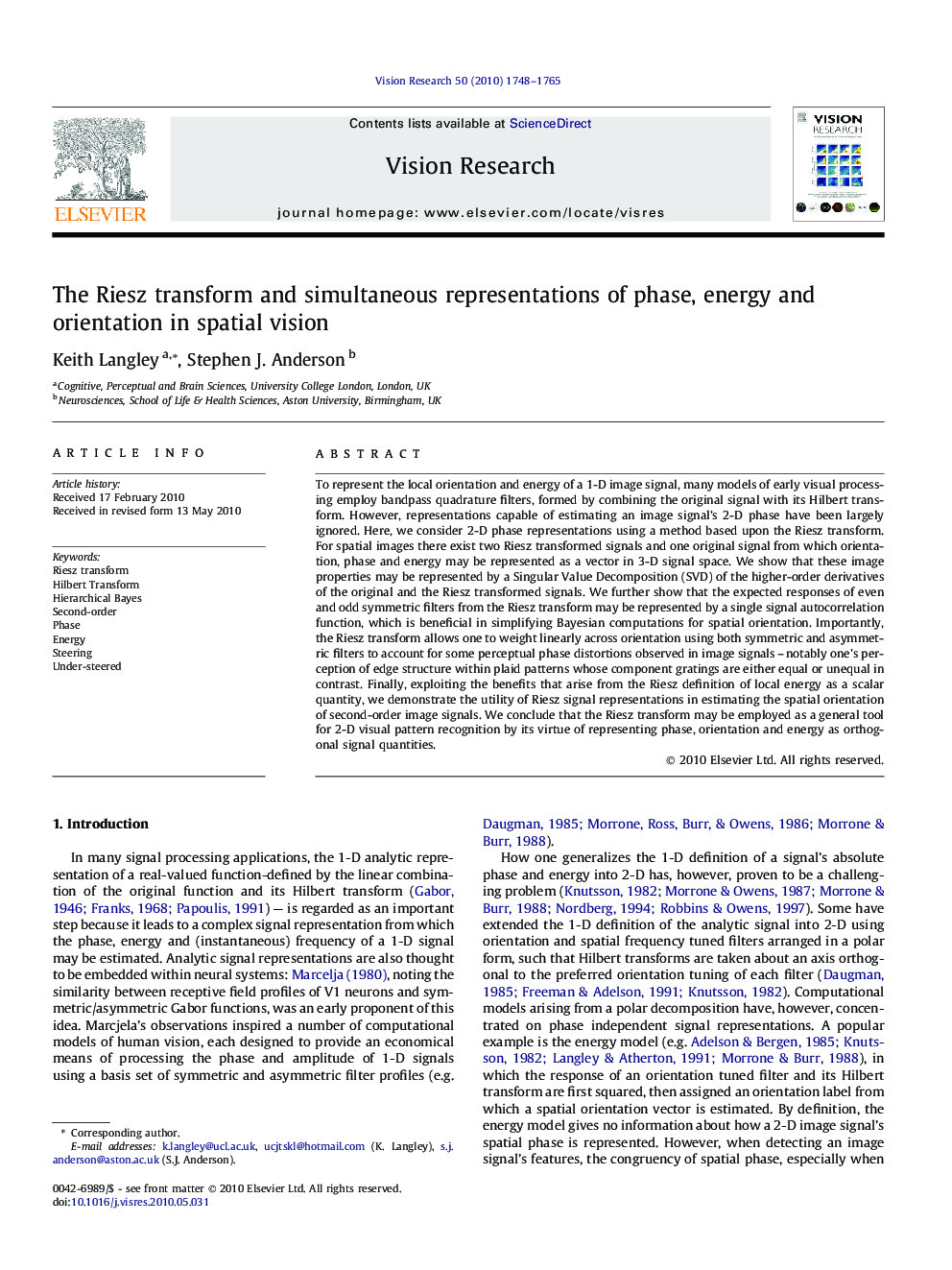| Article ID | Journal | Published Year | Pages | File Type |
|---|---|---|---|---|
| 4034455 | Vision Research | 2010 | 18 Pages |
To represent the local orientation and energy of a 1-D image signal, many models of early visual processing employ bandpass quadrature filters, formed by combining the original signal with its Hilbert transform. However, representations capable of estimating an image signal’s 2-D phase have been largely ignored. Here, we consider 2-D phase representations using a method based upon the Riesz transform. For spatial images there exist two Riesz transformed signals and one original signal from which orientation, phase and energy may be represented as a vector in 3-D signal space. We show that these image properties may be represented by a Singular Value Decomposition (SVD) of the higher-order derivatives of the original and the Riesz transformed signals. We further show that the expected responses of even and odd symmetric filters from the Riesz transform may be represented by a single signal autocorrelation function, which is beneficial in simplifying Bayesian computations for spatial orientation. Importantly, the Riesz transform allows one to weight linearly across orientation using both symmetric and asymmetric filters to account for some perceptual phase distortions observed in image signals – notably one’s perception of edge structure within plaid patterns whose component gratings are either equal or unequal in contrast. Finally, exploiting the benefits that arise from the Riesz definition of local energy as a scalar quantity, we demonstrate the utility of Riesz signal representations in estimating the spatial orientation of second-order image signals. We conclude that the Riesz transform may be employed as a general tool for 2-D visual pattern recognition by its virtue of representing phase, orientation and energy as orthogonal signal quantities.
